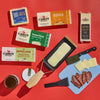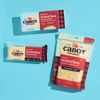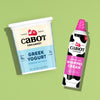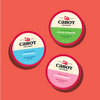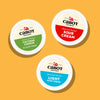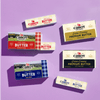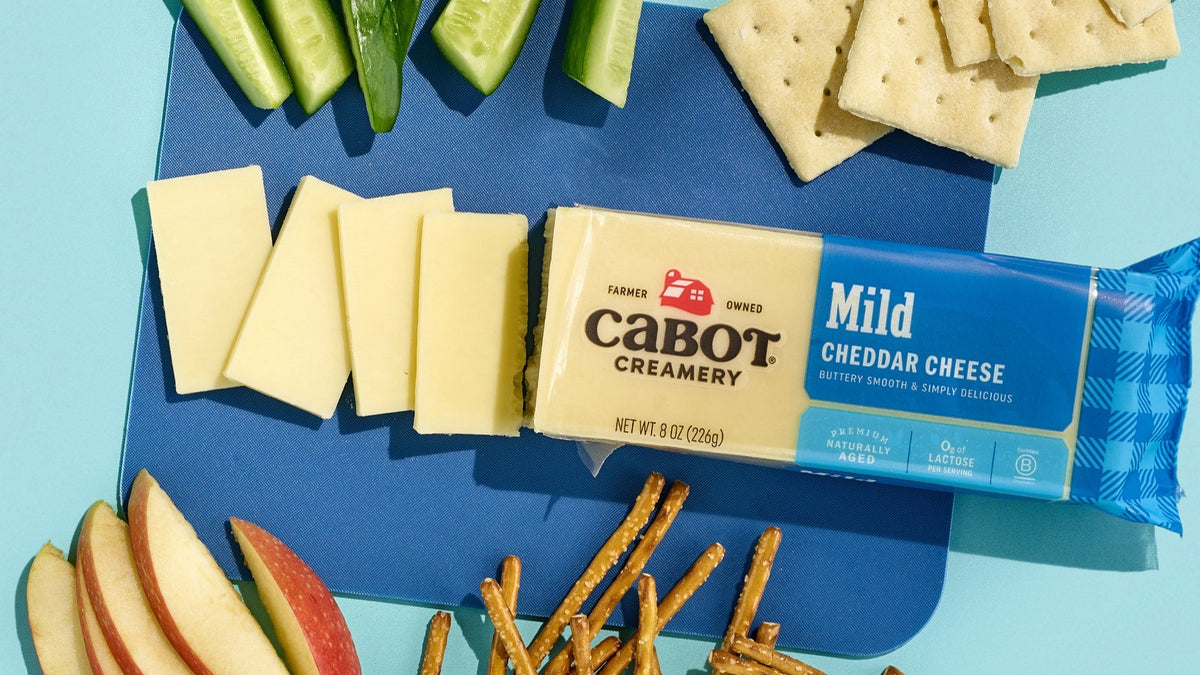
The Health Benefits of Cheese
*Brierley Horton, M.S., RD is a Registered Dietitian Nutritionist, content creator and strategist, and avid mental health advocate. She is co-host and co-creator of the Happy Eating podcast, which breaks down the connection between food and mental wellness.
Let’s face it, cheese used to get a bad rap when it came to talking about “healthy” foods. Caught up in the fat-phobia of the '90s, for years people worried that their beloved block of cheese was doing more harm than good to their health. It also doesn’t help that for years the U.S. Dietary Guidelines have said eating low-fat dairy is best.
Current thinking, though, has many experts wondering if the cautionary tale was a bit too far-reaching. Research shows cheese certainly boasts some real health benefits—and in moderation, is now often recommended as a part of a healthy diet.
So, just how good is cheese good for you, and what’s considered “in moderation”? We have answers for you.
7 Health Benefits of Cheese
1. High in protein
One itty bitty ounce of cheese contains on average 7 grams of protein (that’s 14 percent of your daily value). Protein is our bodies’ powerhouse for cellular growth and healing. And gram for gram, protein is more satisfying than carbs or fat, according to research, so eating protein-rich foods will keep you feeling fuller for longer.
2. Lactose-free*
Cheddar and some other well-aged cheeses have minimal amounts of the dairy sugar lactose. This is great news if you experience the uncomfortable symptoms of lactose intolerance—you can now enjoy a cheddar cheeseburger again! The low lactose content is due in part to the cheese-making process. When a cheese like cheddar is made, early in the process, the curds are separated from the whey—and the whey is where most of the lactose is. The curds (which are naturally quite low in lactose) are then pressed into blocks and aged. During the aging process, the good bacteria use the lactose (remember, it’s a sugar) for energy, further lowering the lactose content of the final cheese product.
3. Low in carbohydrates
Low-carb dieters and people with diabetes or pre-diabetes can rejoice: cheese has minimal impacts on blood sugar thanks to its low carb count (usually less than 1 gram per serving).
4. Lowers your risk of diabetes
Not only is cheese low in carbs, but making it a regular part of your diet may help lower your diabetes risk. For example, one recent study found that people who ate at least 2 servings of dairy a day were less likely to develop diabetes over the course of the 9 year study. Other research shows similar benefits.
5. Good for your heart
Cheese may help your ticker in several ways. For one, the so-called “unhealthy” saturated fat in cheese isn’t as unhealthy as we once thought. In a study that compared cheese to butter, researchers found that when participants ate cheese, their LDL cholesterol (that’s the bad kind) didn’t go up as much as it did when they ate butter.
Second, regularly eating cheese may help improve your blood pressure. And third, eating cheese daily has been shown to be protective against cardiovascular disease. Compared to non-cheese eaters, an analysis of 15 studies showed that eating a little bit of cheese every day lowered participants risk of cardiovascular disease, heart disease, and stroke.
6. Packed with bone-healthy nutrients
Cheese is a calcium powerhouse: a 1-ounce serving of hard cheese (like cheddar) has about 15 percent of your daily value for calcium. And calcium, especially as we age, is critical for bone health, especially in women, who tend to have higher rates of osteoporosis.
Cheese is also a delicious way to add vitamin K to your diet—and K is another key vitamin for bone health (plus, blood vessels and blood clotting). How much vitamin K you’ll get in cheese varies, though, both between varieties and within varieties. Generally speaking, soft cheeses tend to be higher in K than hard cheeses.
7. Counts as a fermented food
Yogurt is a solid go-to and well-known as a fermented food. But you might have overlooked the fact that cheese is also fermented. To make cheese from milk, first a bacteria needs to be added. Later in the process another bacteria is usually added too, and then—depending on the cheese—there’s a ripening process where the cheese really ferments.
What Counts as a Serving?
One serving of any cheese is typically one ounce, which translates to one slice of cheese, 1/4 cup of shredded cheese, or a cube of cheese the size of a pair of dice.
The research, however, isn’t as clear cut. The daily “dose” of cheese that was found to be beneficial varied slightly between studies—some assessed the health perks of eating 1 or 1.5 ounces of cheese a day, while others looked at 2 servings daily.
Still, let’s not lose sight of the forest and use some common sense. Sprinkling some cheese over your favorite salad or pasta dish and adding a slice to your sandwich is very different from eating an entire bowl of queso or most of a double cheese pizza.
3 Healthy Ways To Add Cheese to Your Menu
SPRINKLE: Salads, casseroles, sandwiches and even entrees can be amped up in protein and calcium with a sprinkle of cheese here and there. Sprinkle away at dinner with this Cheesy Chicken Stuffed Spaghetti Squash or at lunch with these Asian Chicken & Cheddar Lettuce Wraps.
FLAVOR: A little bit of flavor goes a long way. Choosing quality cheese with distinct flavors let’s you use less cheese without skimping on flavor. Smoked cheeses or aged cheese tend to be stronger, but every Cabot cheese has a distinct flavor so change it up all the time! Spice things up with this Cracker Appetizer with Habanero Cheddar & Mango Salsa or power up with this Roasted Roots Power Bowl with White Oak Cheddar.
MAKE A PAIR: Snack on your favorite cheese alongside fruits and veggies, whole wheat crackers or lean cuts of meat. Choosing other healthy counterparts will make your snacks nutrition powerhouses. Try this Charcuterie Lunchbox for an on-the-go snack! Or one of our many cheese board recipes pairing fresh fruits and veggies with your favorite Cabot cheese.
*We want you to feel confident about enjoying our award-winning cheddar. When we use the terms 'lactose free' or '0g of lactose per serving', it is because Cabot Cheddars, Monterey Jack, Colby Jack, and Muenster cheeses contain very-little-to-no lactose per serving (less than 0.1 grams per 1oz serving).
For reference:
1 8oz glass of milk has 12-13 grams of lactose
3/4 cup Greek yogurt has 4 grams of lactose
2/3 cup of Ice Cream has 4-5 grams of lactose
1 oz Cabot Cheddar has LESS than 0.1 grams of lactose
